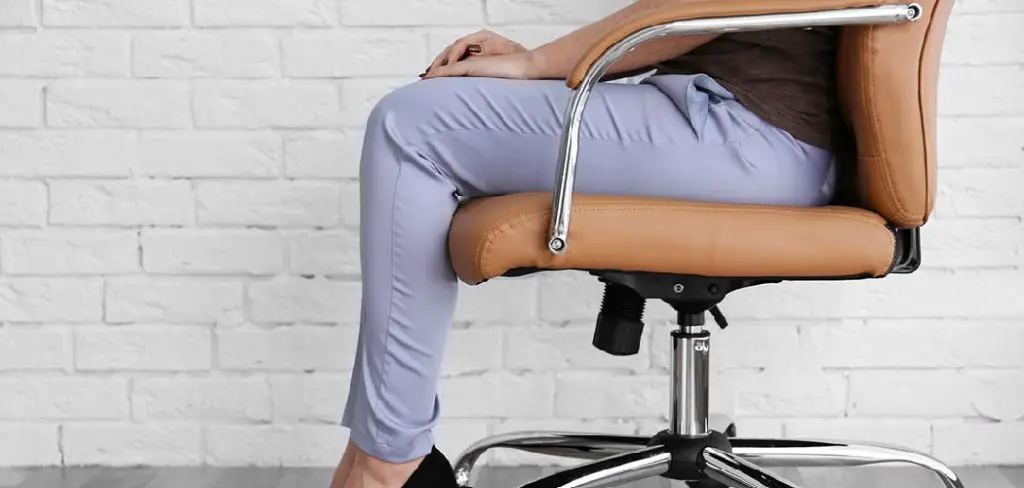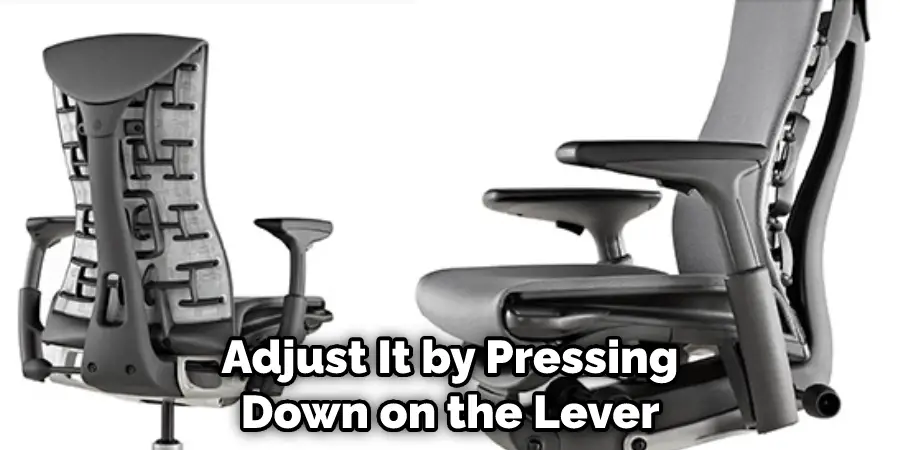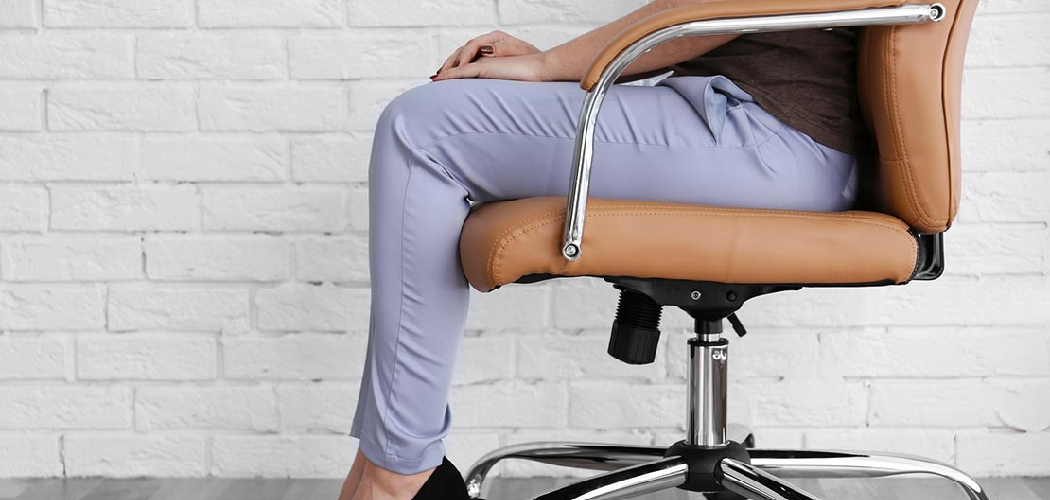If you’re like most people, you spend a good chunk of your day sitting in a chair. Whether you’re at work or home, sitting for long periods of time isn’t always great for your back and neck.

If you’ve been struggling to find a comfortable chair that doesn’t cause pain, you may want to consider adjusting your embody Chair. With just a few simple adjustments, you can make this chair perfect for your body type and height. Keep reading to learn how to adjust embody chair.
A great chair can make all the difference in the world when it comes to productivity and comfort. If you’re not happy with your current chair, or if you’re looking for an upgrade, consider the embody Chair. This chair is highly adjustable and can be tailored to fit your individual needs, improving your comfort and productivity while you work.
Can You Recline in Herman Miller Embody?
One of the unique features of the embody Chair is its adjustable recline. To adjust your chair to a comfortable setting, you need to first unlock it by pressing down on the adjustment lever located at the base of your seat. You can then lift or lower your backrest until it’s in an ideal position for your body type and height. Although this chair does recline, you won’t be able to completely lay back in it.
10 Methods How to Adjust Embody Chair
1. Adjust the Backrest.
The first thing you should do is adjust the backrest. The backrest should be at a comfortable angle for you to sit in. You can adjust it by loosening or tightening the knob at the back of the chair.
If you find the backrest is too high, you can also adjust it by pressing down on the lever located at the base of your seat. Make sure that the backrest is adjusted to a comfortable angle before you start making other adjustments.

2. Adjust the Seat Height.
The next thing you should do is adjust the seat height. You can do this by either raising or lowering the lever under the seat. The seat should be at a comfortable height for you to sit in.
Although the seat can be adjusted from a height of 17 to 21 inches, most people prefer to keep it around 18 or 19 inches. While you’re adjusting the seat height, make sure that your feet are flat on the ground and that you can easily reach the floor with your toes.
3. Adjust the seat depth.
The next thing you should do is adjust the seat depth. This is important because it will determine how far back your knees will be when you are sitting in the chair. You can adjust the seat depth by either moving the lever under the seat forward or backward.
Try to find a setting that is comfortable for you without being too far back or too far forward. Make sure that your feet are still flat on the ground while you’re adjusting the seat depth.
4. Adjust the Armrests.
The next thing you should do is adjust the armrests. The armrests should be at a comfortable height for you to sit in. You can adjust them by either raising or lowering the levers on the side of the chair.
If you find the armrests are too low, you can also adjust them by pressing down on the lever located at the base of your seat. Make sure that the armrests are adjusted to a comfortable height before you start making other adjustments.
5. Adjust the Headrest.
Adjusting the headrest is important for ensuring that your neck and head are properly supported. You can adjust the headrest by either raising or lowering the lever on the back of the chair. Make sure that the headrest is adjusted to a comfortable height before you start making other adjustments. While you’re adjusting the headrest, make sure that your head and neck are in an aligned position.

6. Adjust Lumbar Support.
If your chair has lumbar support, then you will want to adjust it so that it is at a comfortable level for you. Lumbar support helps to reduce lower back pain when sitting for long periods of time.
You can adjust lumbar support by either moving it up or down on the back of the chair or by adjusting the knob on the side of the chair. Although you should adjust the lumbar support for your own comfort, make sure that it is still at the correct level for spinal alignment.
7. Adjust Tilt Tension.
Tilt tension is what determines how easy or difficult it is to recline in your chair. If you find that it is difficult to recline, then you will want to increase the tilt tension; if it is too easy to recline, then you will want to decrease the tilt tension.
You can adjust it by turning the knob on the side of the chair. Try to find a tilt tension that is comfortable for you without making it too easy or too difficult to recline. Although you should adjust the tilt tension for your own comfort, make sure that it is still at the correct level for spinal alignment.
8. Adjust the Chair’s Forward Tilt.
The next thing you should do is adjust your chair’s forward tilt. This will determine how far back your body will be when sitting in the chair and how close you are to your desk or work surface. You can adjust this by either raising or lowering the lever under the seat.
While you’re adjusting the forward tilt, make sure that your feet are still flat on the ground and that you can easily reach the floor with your toes. Try to find a forward tilt that is comfortable for you without being too far back or too close to your desk.
9. Adjust the Height of the Armrests.
Finally, you will want to adjust the height of your armrests so that they are at a comfortable level for you. You can do this by either raising or lowering them using the levers on the sides of the chair.
Though you should adjust the armrests for your own comfort, make sure that they are still at the correct level for spinal alignment. If your armrests are too low, you can also adjust them by pressing down on the lever located at the base of your seat.

10 Adjust Padding.
Lastly, you can adjust the padding of your chair. If you find that your chair is not comfortable enough or too soft, then you can add additional padding to make it more comfortable for long hours of sitting.
You can do this by either adding foam inserts to the seat and backrest or by purchasing an additional cushion. Make sure that the padding is adjusted to a comfortable level before you start making other adjustments.
The Herman Miller Embody Chair is a great choice if you’re looking for a comfortable and ergonomic office chair. With its highly adjustable design, it allows you to customize your seating experience in order to better suit your individual needs and preferences.
By following the steps outlined above, you can easily adjust the embody Chair so that it fits your body perfectly. With these adjustments, you’ll be able to reduce discomfort while sitting and enjoy a more productive workday.
Things to Consider While Adjusting Embody Chair
1. Check the Tension Settings:
To ensure proper posture, make sure that your chair’s tension settings are adjusted correctly. This will help you maintain good posture while seated and prevent strain on your spine, neck, and back.
2. Adjust the Seat Height:
Make sure that your feet are flat on the ground with a slight bend in your knees when you’re sitting in the chair. If your feet don’t reach the floor, use a small stool or box to get them there.
3. Posture:
Sit up straight with your shoulders and neck relaxed as much as possible when adjusting embody chair. Your arms should rest comfortably at the side of your body while typing or using a mouse.
4. Lumbar Support:
It’s important to ensure that your lower back is supported while sitting in the chair. Make sure the lumbar pad is adjusted properly, so it sits snugly against your lower back and supports the natural curve of your spine.
5. Armrests:
The armrests should be adjustable so you can easily rest your arms comfortably while typing or using a mouse. They should also provide enough support for your wrists, forearms, and elbows when resting.
6. Headrest:
To help prevent neck strain, make sure that the headrest is adjusted to support the natural curvature of your neck and spine without pushing too hard into them. You want it to feel like it’s cradling your head.

Conclusion
In conclusion, it is important to remember a few key things when adjusting your Embody Chair. First, adjust the back height so that the lumbar support is in line with your lower back. Second, be sure to recline the backrest between 105-120 degrees and tilt the seat forward slightly.
Finally, use the tension knob to find your perfect balance of comfort and support. By following these simple steps on how to adjust embody chair, you can ensure that you are getting the most out of your chair and preventing any unnecessary pain or discomfort.

